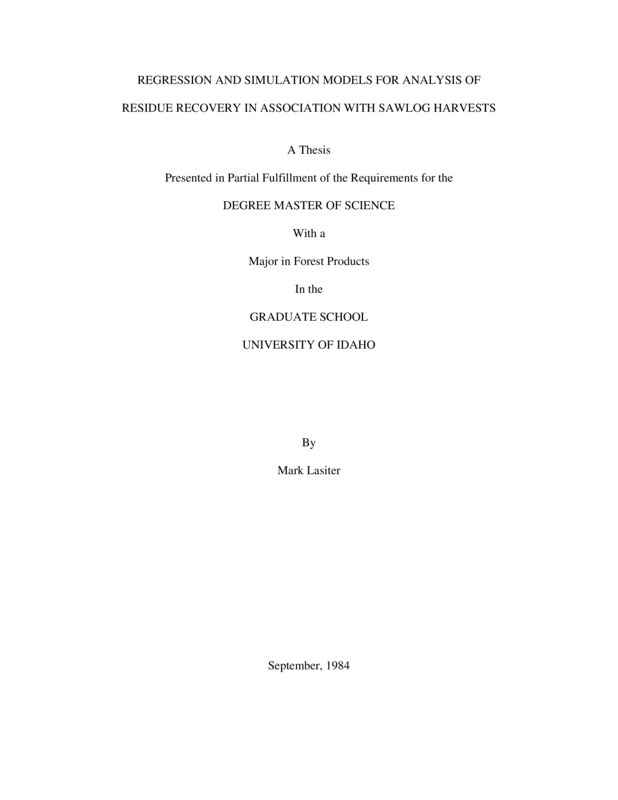PDF PREVIEW
Regression and Simulation Models for Analysis of Residue Recovery in Association with Sawlog Harvests Item Info
- Title:
- Regression and Simulation Models for Analysis of Residue Recovery in Association with Sawlog Harvests
- Creator:
- Lasiter, Mark
- Date Created:
- 1984-09
- Description:
- Simulation was used to examine equipment alternatives and costs associated with recovery and processing of logging residue. Equipment models were developed from data recorded during harvesting operations involving residue recovery. Tests were performed on the validity of various models to establish their credibility for use with the SAPLOS harvesting system model. Simulation comparisons were made between the original yarding equipment studied on four sites and possible alternative yarders. Harvesting methods included a concurrent and double entry approach for the recovery of the logs and residue. Recovery costs were estimated for the various alternatives and conclusions drawn from the comparison of the simulated results. In smaller second growth timber, a concurrent recovery of the material was the better choice based on production and economics. For old growth stands containing a mix of large and small diameter timber, the double entry harvesting method was the favored alternative. Simulation can be used to plan the most economical balance of harvesting method and equipment.
- Document Type:
- Thesis
- Library Call Number:
- SD544.L38 1984
- Subjects:
- Flat Creek logging residue logging costs residue recovery slash residue slash recovery SAPLOS harvesting models double entry harvesting method forest operations
- UIEF Unit:
- Flat Creek
- Stand Number:
- 43, 45
- Location:
- UIEF; Flat Creek
- Latitude:
- 46.855191
- Longitude:
- -116.757958
- Department:
- Department of Forest Products
- Type:
- Text
- Format:
- application/pdf
Source
- Preferred Citation:
- "Regression and Simulation Models for Analysis of Residue Recovery in Association with Sawlog Harvests", UIEF Research Exchange, University of Idaho Library Digital Collections, https://www.lib.uidaho.edu/digital/uief/items/uief_0016.html
Rights
- Rights:
- In copyright, educational use permitted.
- Standardized Rights:
- http://rightsstatements.org/vocab/InC-EDU/1.0/

